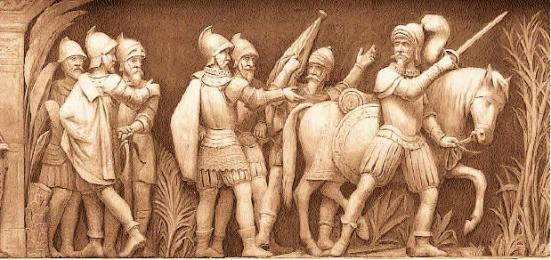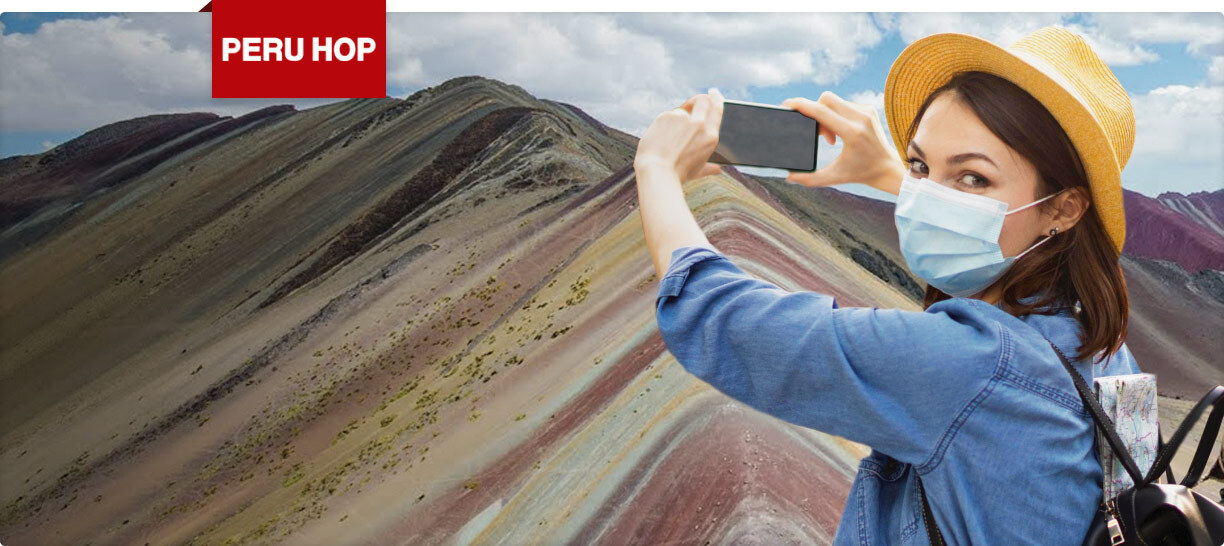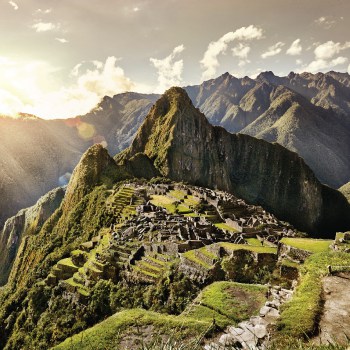Why is Peru Called Peru?
In the early 1500s, as the Old World staked its claim upon the New, a new word arrived to describe the rich lands of the Inca Empire. As the Incas struggled and ultimately failed to maintain what they knew as the Tawantinsuyu, the Spanish were talking of the Conquest of Peru.
Contemporary records were inconsistent: Perú, Biru, Virú, Pirú and Berú all appeared in the early chronicles and accounts of the Conquest. Like the New World itself, the word was in flux. “Peru,” however, was to prove a durable name — despite its uncertain origins.

The Etymology of Peru: Two Theories
Historians have put forward or supported various etymological theories since the Conquest. Two theories, however, have gained greater traction than the rest:
Garcilaso’s Fisherman
Garcilaso de la Vega (1539-1616) was one of the first historians to tackle the etymology of “Peru”. Garcilaso, commonly known as “El Inca,” was the son of a Spanish conquistador and an Inca noblewoman. His Comentarios Reales de los Incas, published in 1609, remains one of the most important contemporary accounts of the Incas and the Spanish Conquest.
In the first volume of his Comentarios, Garcilaso offers one of the first answers as to why Peru is called “Peru”. According to “El Inca,” a group of Spanish explorers landed on the Pacific coast somewhere south of the equator, where they encountered a native fisherman at the mouth of a river.
With no interpreter at hand, the Spaniards tried to ask the fisherman his name and the name of the land on which they now stood. The native replied that his name was Berú and that the place where he stood was Pelú (which, according to Garcilaso, was the local word for “river”).

The Spaniards were happy to take the similarly sounding Berú and Pelú for the name of the region, which in turn became Perú. Garcilaso dates this encounter to 1515 or 1516.
Pascual de Andagoya and the Cacique Birú
In 1522, a Spanish conquistador named Pascual de Andagoya sailed east along the coast of Panama. He reached the Gulf of San Miguel, where he visited the native settlement of Chochama. The inhabitants of Chochama told Andagoya of a province further to the south; a province named Birú.
After gathering reinforcements, Andagoya pushed south on foot for six or seven days until he reached the previously uncharted region of Birú. The cacique (tribal leader) of the region was also named Birú.
At this time — 10 years before Francisco Pizarro began his Conquest of Peru — the region known as Birú marked one of the southernmost points known to the Spaniards. Despite lying well to the north of the Inca Empire, the word Birú, which in turn became Peru, came to signify all that lay to the south.
By the time Pizarro began his successful push into the Inca heartlands, what the Incas knew as Tawantinsuyu, the conquistadors called “Peru”.
Peru: A Name for a Changing Nation
Of the two accounts, Pascual de Andagoya’s version carries greater weight as a source. Despite writing his account of Birú 15 or so years after the event, Andagoya provides the firsthand details that Garcilaso lacks in this particular instance.
Whatever the exact origin may be, one thing seems almost certain: the Incas themselves did not use the word “Peru.” As noted by Peruvian historian Raúl Porras Barrenechea (1897-1960) in El Nombre del Perú, “Peru” is not a word of the Quechua language (the language of the Incas).
“Peru”, therefore, was of neither Inca nor Spanish origin. It was, basically, an orphan.
Despite this, or perhaps because of it, it was to prove a durable name for a changing nation. The Viceroyalty of Peru was created in 1542, giving the word official status and displacing the distinctly Spanish-sounding administrative regions of Nueva Castilla and Nueva Toledo.
Later, following the struggle for independence, the Republic of Peru was born. Both occasions could have brought about a change of name, but no such change occurred.
The continuance of the name — even in the face of great upheavals — may be due, at least in part, to its uncertain origins. In an article for El Pais, Jesús A. Cosamalón makes an interesting observation:
“Curiously, the name “Peru” has the advantage of not referring to any territory or indigenous group in particular; it is politically “neutral,” it cannot be claimed by anyone in particular and allows continuity between the colonial past and Independence.”
ENTERTAINMENT TIP: If looking for fun at night, or to watch sports during the day, or even a taste of home, visit the Wild Rover Hostels Chain for great food, sports and beer! Entrance to their bars is free even for non-guests











2 comments for “Why is Peru Called Peru?”